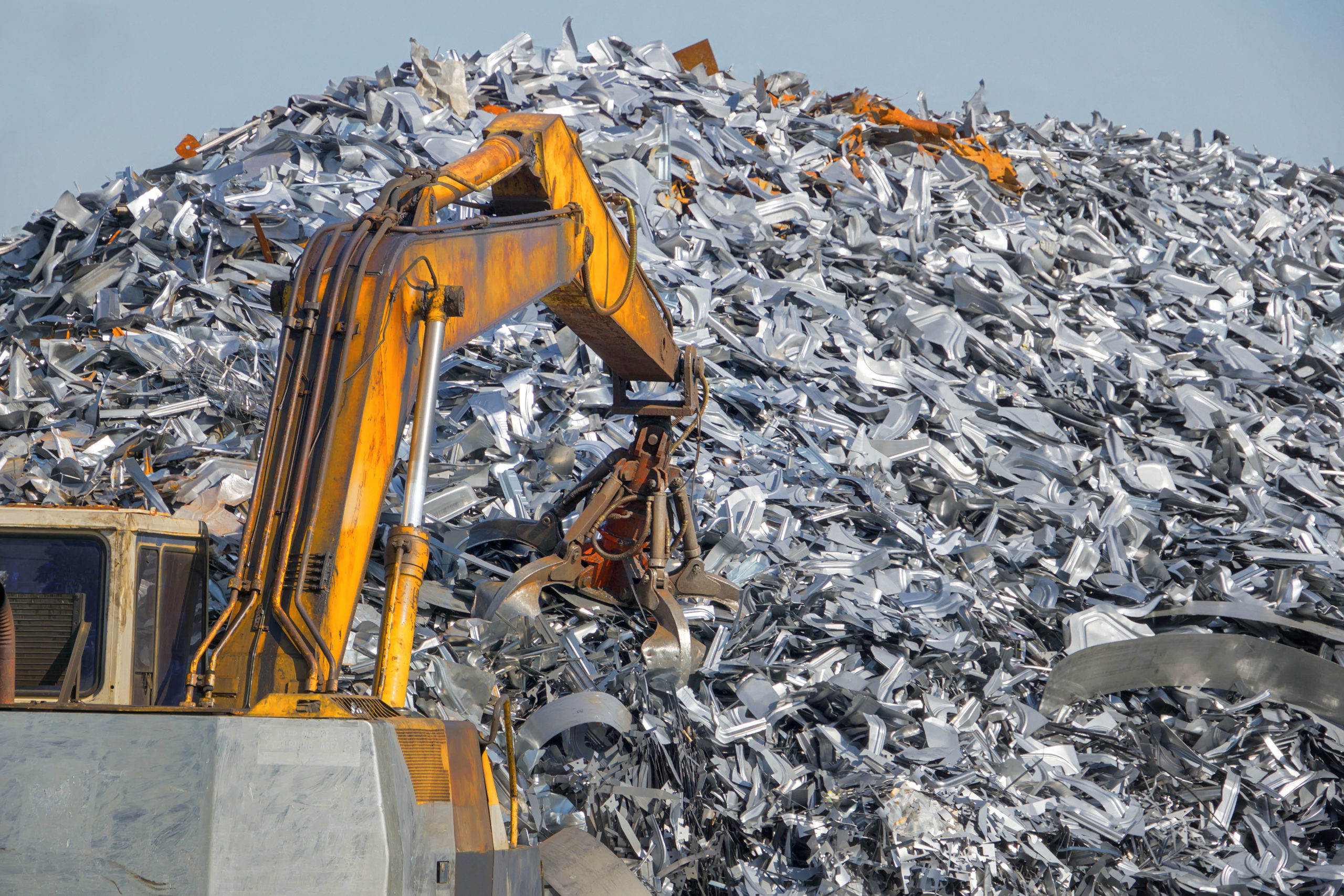Aluminium can be recycled again and again, saving about 95% of the energy required for primary production.
US consumer prices for aluminium automotive scrap (April 2010) are US$ 1830 per metric tonne and US$ 400 per gross tonne for steel automotive scrap. The non-metallic material that remains after shredding (known as “fluff”) continues to be landfilled in the USA and therefore has a negative value. In the European Union fluff is either incinerated or recycled. The value of this non-metallic fraction is still negative or zero. Increased use of aluminium, which has a positive value at end of life, increases the value of the vehicle and the embodied scrap at the end of its life while decreasing the amount of fluff landfilled in the USA.
A number of efficient processes are used to recover aluminium scrap from vehicles. The Figure shows the process presently applied to recycle a typical passenger car. Some easy-to-dismantle aluminium parts are often removed during the initial dismantling of the vehicle. The car body, including the remaining aluminium, is fed to the shredder where it is smashed into pieces by a hammer mill. After separating the ferrous fraction using magnets and the removal of the light shredder residue by a cyclone, a mixture of plastics, rubber, glass, textiles, high grade steel and nonferrous metals is obtained. This mixed fraction is subjected to sink-float and eddy current separation and results in the extraction of aluminium scrap. Additional sorting processes to increase further the recycling rate and the quality of the recycled material are in use or under development.
Aluminium scrap recovered using the various separation procedures is today mainly processed into aluminium casting alloys. Typical applications for castings include engine blocks, cylinder heads and gearboxes. Due to the increased use of aluminium wrought alloys in car bodies, a growing volume of wrought alloy scrap is anticipated in the future. Hence, the separate collection of wrought alloys from cars might become economically viable in the coming decades.

Aluminium from transport applications is part of an established recycling system. Recycled aluminium can be utilized for almost all applications, preserving raw materials, reducing emissions and leading to considerable energy savings. Currently, metals, aluminium being the most significant, play an important role in funding the end-of-life processing of vehicles, through their high scrap value.